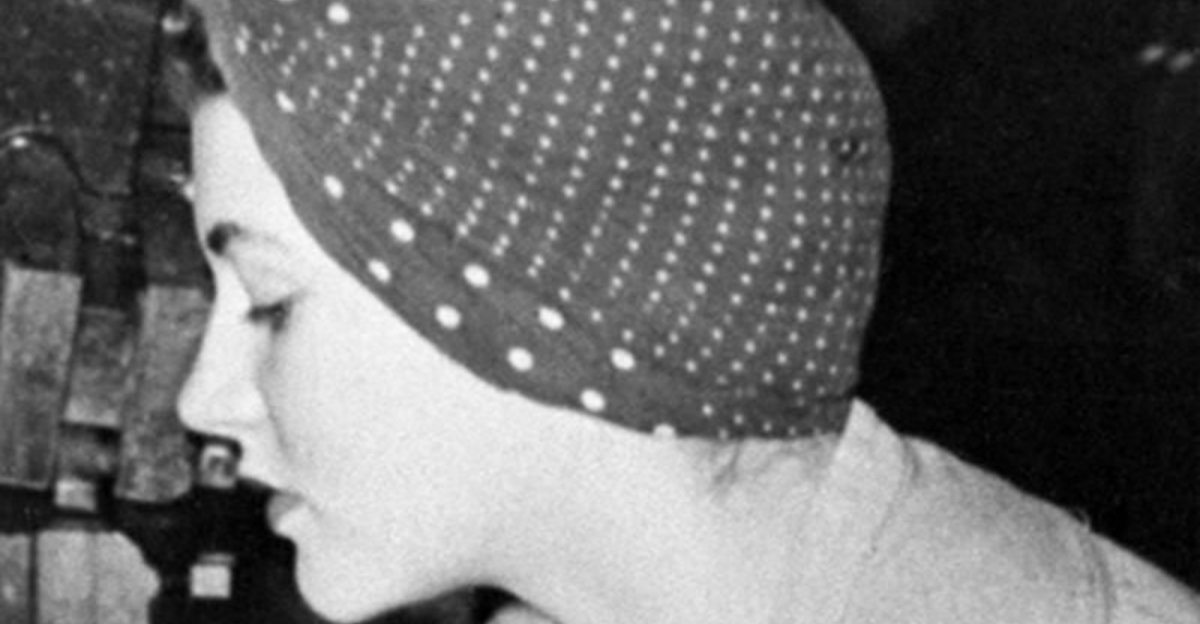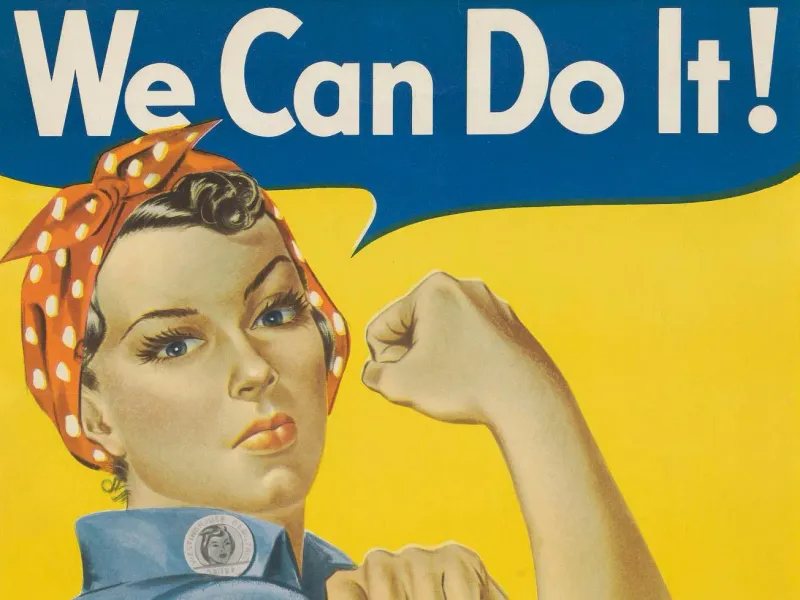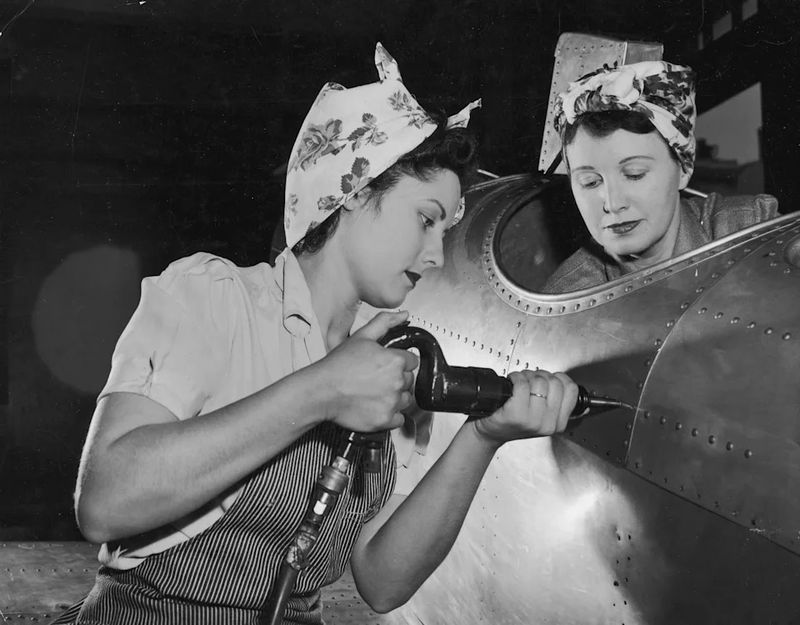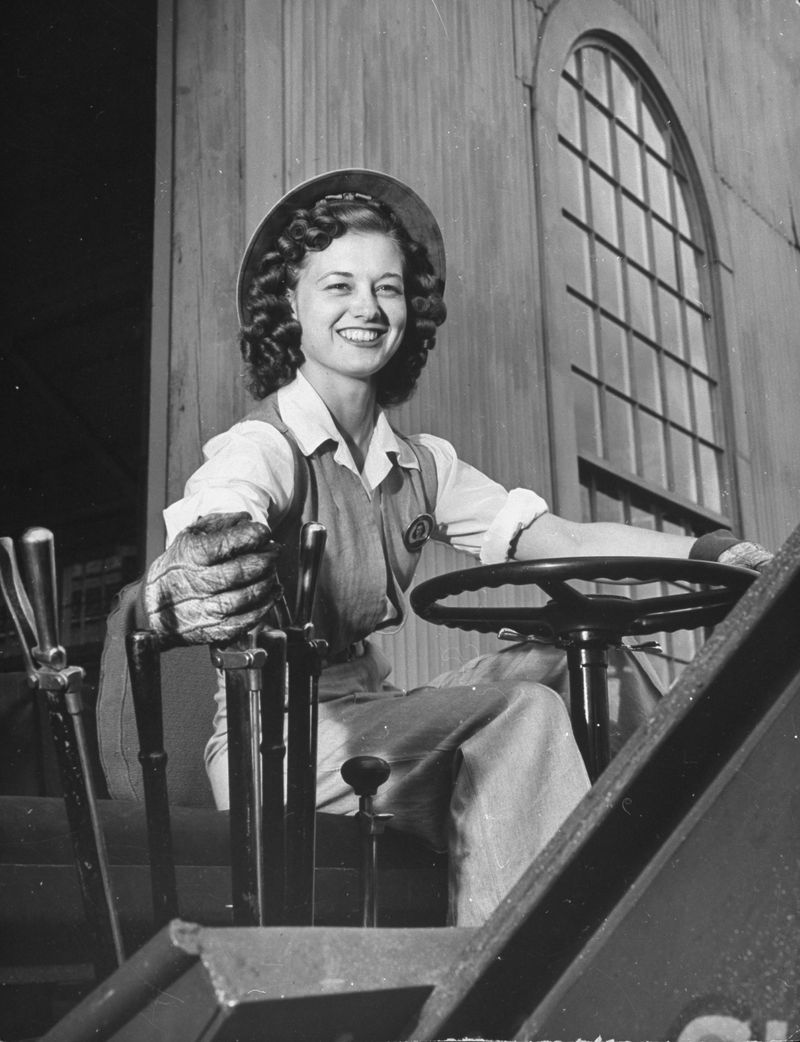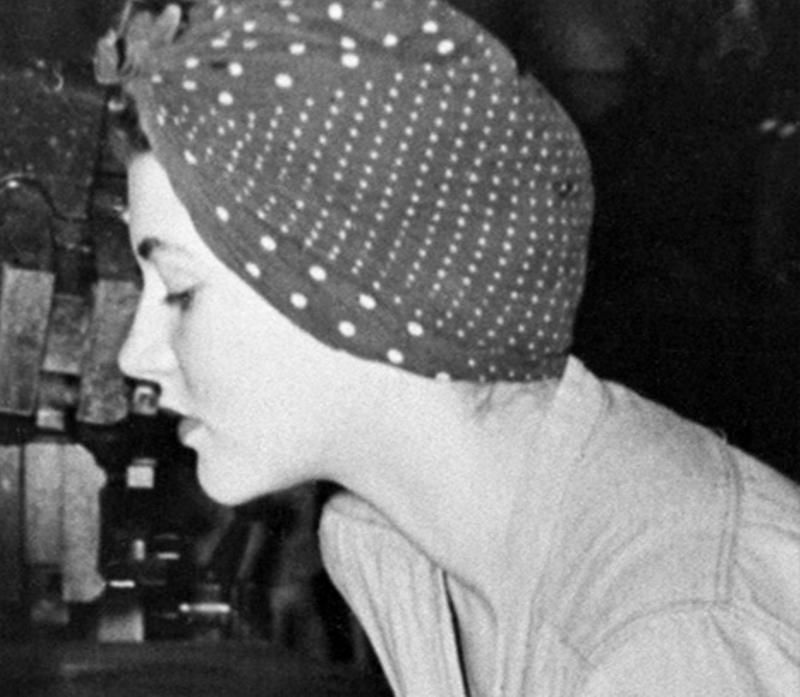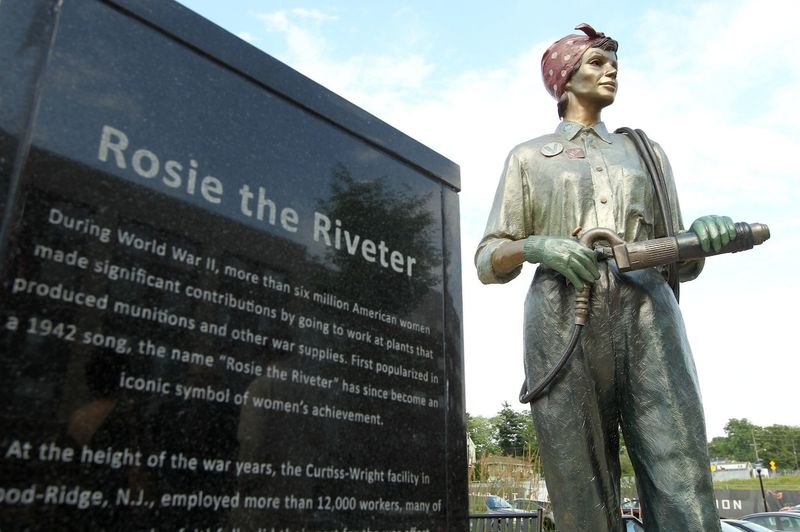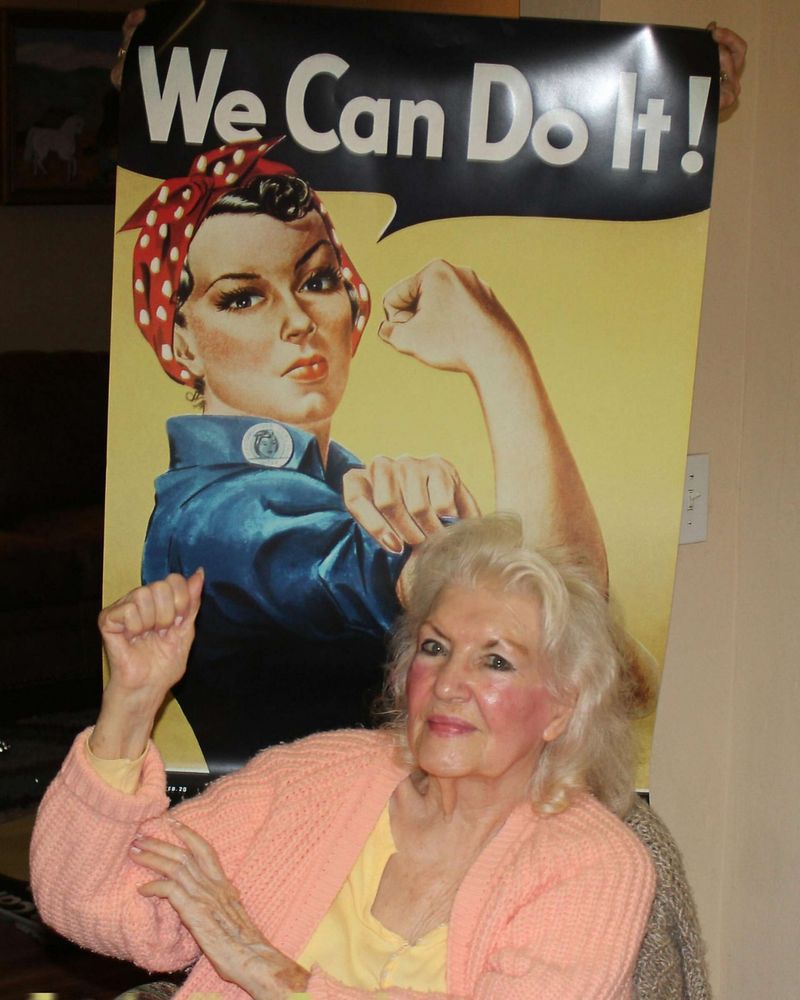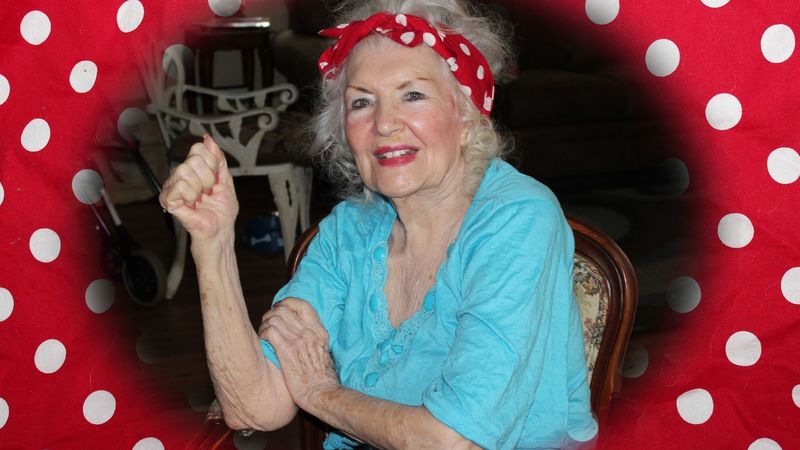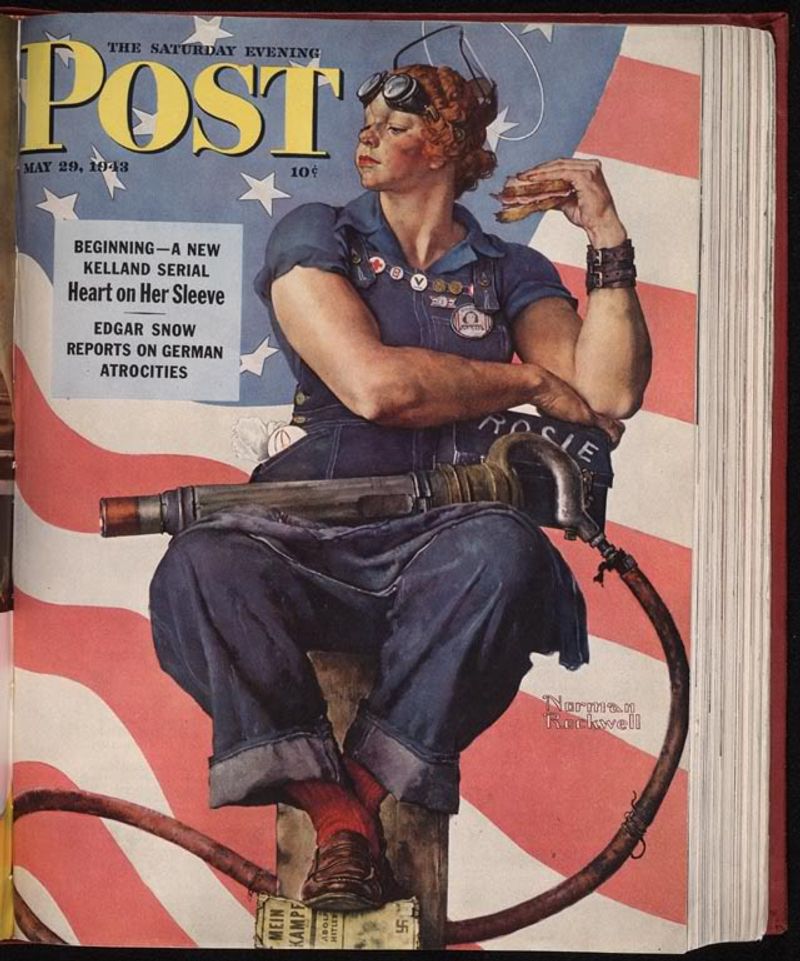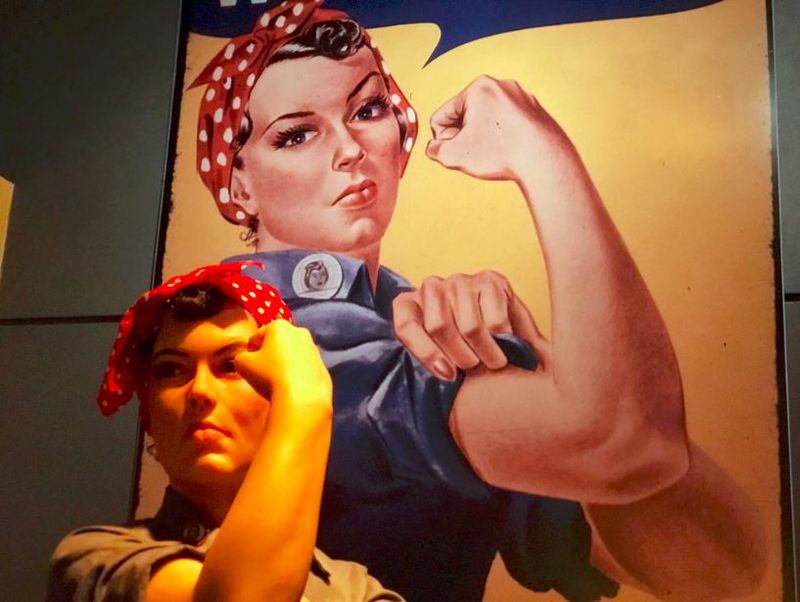Explore the untold story of the real Rosie the Riveter, who became an iconic symbol of wartime female empowerment. This blog post delves into the fascinating life and legacy of Naomi Parker Fraley, the woman behind the famous image. Discover the truth about her identity, the journey to recognition, and the enduring impact of her story. Each item in this post reveals a unique facet of Rosie’s history, from her origins in a Michigan factory to her posthumous fame. Join us as we uncover the true story of a wartime heroine.
1. She Wasn’t Named Rosie at First
The iconic ‘We Can Do It!’ poster, widely associated with Rosie the Riveter, didn’t originally use the name Rosie. This moniker came from a popular wartime song that captured the spirit of female workers stepping into roles traditionally held by men. The poster itself, created by J. Howard Miller in 1943, aimed to boost morale and inspire women to join the workforce. It wasn’t until later that the connection between the poster and the song solidified Rosie’s place in history as a symbol of empowerment. Her image became timeless, transcending its original purpose.
2. The Investigation Took Years
For decades, the identity of the woman in the ‘We Can Do It!’ poster remained a mystery. It wasn’t until the late 20th century that historians and journalists embarked on a mission to uncover her true identity. The investigation involved combing through archival records, photographs, and personal interviews. The pursuit of truth was relentless, driven by a desire to credit the real woman who became a symbol of female empowerment. This painstaking process took years, reflecting the complexity of historical research and the passion of those dedicated to honoring unsung heroes.
3. She Was a Factory Worker in Michigan
Naomi Parker Fraley, the real Rosie the Riveter, worked at a defense plant in Ypsilanti, Michigan, during World War II. She was part of the effort to build B-24 Liberator bomber planes, a crucial component of the Allied war effort. The factory was a bustling hub of activity, with women taking on roles to support the troops overseas. Naomi’s contribution symbolized the vital role women played on the home front, stepping into industries previously dominated by men. Her work ethic and determination exemplified the spirit of the era, showcasing women’s capabilities.
4. Her Name Was Naomi Parker Fraley
After years of speculation and debate, it was finally confirmed in 2016 that Naomi Parker Fraley was the woman in the iconic photo that inspired the famous poster. Naomi, then in her 20s, never sought the spotlight but became a symbol of female empowerment nonetheless. Her identity was confirmed through meticulous research that included examining photographs and first-hand accounts. Naomi’s life story became an inspiring tale of recognition and acknowledgment, reminding us that history often overlooks the true faces behind its legends. Her legacy endures, celebrating her as a pioneer for women everywhere.
5. She Was Mistaken for Another Woman
For many years, Geraldine Hoff Doyle was mistakenly credited as the inspiration for Rosie the Riveter. This confusion arose from a 1942 photograph that was misidentified in the 1980s. Despite the resemblance between the two women, careful examination of historical evidence and testimonies eventually corrected the record. The misidentification highlights the challenges in preserving historical accuracy and the importance of recognizing the right individuals. Naomi Parker Fraley’s story emphasizes the need to honor those who truly made an impact, even if it means rewriting the narrative decades later.
6. The Photo That Started It All
A single photograph taken in 1942 became the catalyst for the Rosie the Riveter phenomenon. Captured at a naval air station in California, the image showed Naomi Parker Fraley diligently working at her station, wearing a now-iconic polka-dot bandana. This image would later serve as the inspiration for the famous ‘We Can Do It!’ poster. The photograph, initially a simple documentation of wartime labor, transformed into a powerful symbol of female resilience and capability. Naomi’s portrayal in this image resonated deeply, becoming a lasting emblem of strength and determination.
7. She Didn’t Know She Was ‘Rosie’ for Decades
Despite being the face of an iconic symbol, Naomi Parker Fraley only learned she was the real Rosie the Riveter in her 90s. For most of her life, she was unaware of her connection to the famous poster. This revelation came just two years before her passing, offering her and her family a newfound sense of pride and recognition. Learning about her role in history was an emotional moment for Naomi, who humbly embraced her place in the annals of wartime history. Her late discovery serves as a poignant reminder of the unforeseen impacts our lives can have.
8. She Fought for Recognition
When Naomi Parker Fraley discovered that Geraldine Hoff Doyle was wrongly credited as Rosie, she embarked on a mission to set the record straight. Despite her advanced age, Naomi was relentless in her pursuit of recognition, driven by a desire for historical accuracy. Her determination to correct the narrative inspired many, showcasing her resilience even in her later years. Naomi’s fight for recognition was not just personal; it was a battle for truth and justice. Her efforts highlighted the importance of giving credit where it’s due, ensuring her rightful place in history.
9. The Poster Was Almost Forgotten
The ‘We Can Do It!’ poster, now synonymous with Rosie the Riveter, was scarcely seen during World War II. Originally intended for internal use by Westinghouse Electric, it was not widely distributed or publicized. It wasn’t until the 1980s that the image resurfaced, capturing the imagination of a new generation. This rediscovery turned the poster into a powerful emblem of feminism and empowerment, embraced by various movements worldwide. The poster’s journey from obscurity to fame underscores the unpredictable nature of cultural symbols and their capacity to inspire across different eras.
10. Her Legacy Lives On
Naomi Parker Fraley’s story and the image of Rosie the Riveter continue to inspire millions around the globe. Her legacy endures as a testament to the countless women whose contributions during World War II were overlooked. Today, Rosie the Riveter is celebrated as an icon of strength, resilience, and empowerment. Her story is told through books, documentaries, and art, reminding us of the power of ordinary individuals to effect extraordinary change. Naomi’s enduring legacy serves as a beacon for future generations, encouraging women to forge their paths with courage and determination.
